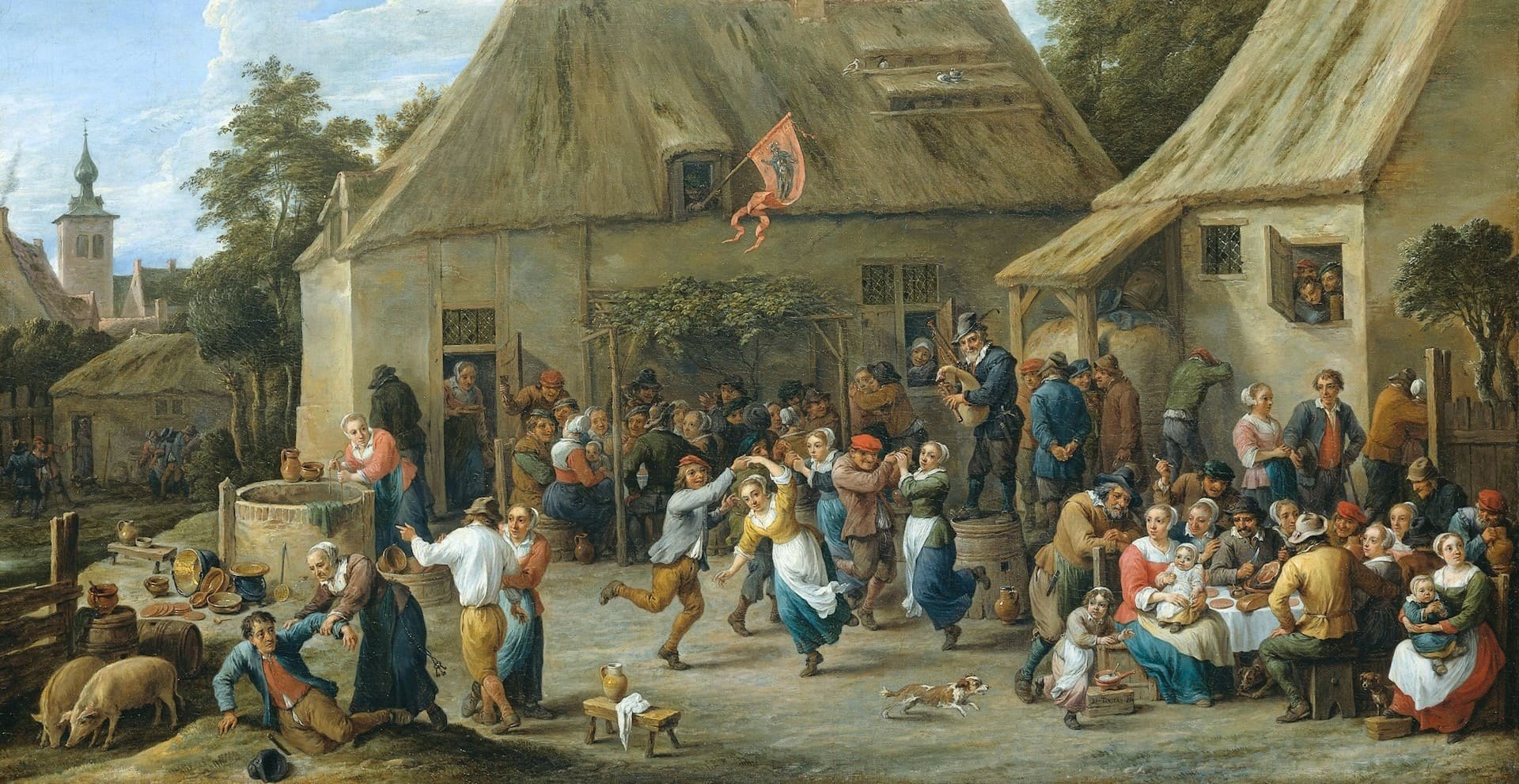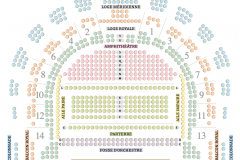Gounod, Faust
March 2026 | ||||||
|---|---|---|---|---|---|---|
Mo | Tu | We | Th | Fr | Sa | Su |
Gounod: Faust | Staged opera
Opera in five acts to a libretto by Jules Barbier and Michel Carré, based on the eponymous legend and Goethe’s play, premiered at the Théâtre-Lyrique in 1859.
Performance in French with French and English surtitles.
Duration: 3h30 including intermission
.
Since its premiere in 1859, Gounod’s Faust has stood at the summit of French opera. Goethe’s text had deeply influenced the Romantics—Liszt, Berlioz, Gounod, and later Boito all set it to music. Gounod was twenty years old when he discovered this work during his Prix de Rome stay in 1839 and fell under its spell. There was good reason: the hero, at the twilight of his life, wants to poison himself, convinced that all science and belief are futile. Dr. Faust calls upon the Devil and sells his soul in exchange for youth, through the diabolical figure of Mephisto. What follows is a love story, as passionate as it is doomed, with Marguerite… leading ultimately to death.
The music took two decades to mature, first in building a vast libretto, then in developing a work as rich as it is coherent, offering a wide range of emotions and effects, and a succession of scenes evoking medieval Germany: Faust’s study, the fair, Marguerite’s garden and room, the church, the mountain, the prison… A whirlwind in which each character is powerfully drawn.
Gounod thus created a truly grand romantic opera, beloved for its famous arias (the Jewel Song, the Song of the King of Thule, the Golden Calf, I want youth!, etc.) and iconic choruses of students and soldiers (Immortal glory to our forefathers!). French romantic opera reaches its peak here, blending fantastical storytelling with soaring lyricism, worthy of the strength of The Count of Monte Cristo. With over 2,800 performances in Paris since its premiere—almost without interruption—this masterpiece was even chosen for the opening night of the Metropolitan Opera in New York in 1883.
There is no doubt that Julien Behr and Vannina Santoni will stir your heart, while the Chorus of the Royal Opera and the Chorus of the Opéra de Tours sweep you into celebration and sacred redemption.
Co-production: Royal Opera / Château de Versailles Spectacles, Opéra de Tours.
Premiere on March 4, 2026 at the Opéra de Tours.
Sets, costumes, and props made in the workshops of the Opéra de Tours.
PRESTIGE VIP CATEGORY: The best seats in the house, with a complimentary program and a glass of champagne.
PRESTIGE CATEGORY: Excellent seats, with a complimentary program and a glass of champagne.
Program and cast
Julien Behr – Faust
Vannina Santoni – Marguerite
Éléonore Pancrazi – Siébel
Julie Pasturaud – Marthe
Luigi De Donato – Méphistophélès
Anas Séguin – Valentin
Jean-Gabriel Saint-Martin – Wagner
Baroque Dance Academy of the Royal Opera
Chorus of the Opéra de Tours
Chorus of the Royal Opera
Orchestra of the Royal Opera
Laurent Campellone, Conductor
Jean-Claude Berutti, Stage Director
Rudy Sabounghi, Set Design
Françoise Raybaud, Costumes
Christophe Forey, Lighting
Reveriano Camil, Choreography and Assistant Director
Program
Opera in five acts on a libretto by Jules Barbier and Michel Carré, based on the eponymous legend and Goethe’s play, premiered at the Théâtre-Lyrique in 1859.
New production by the Royal Opera.
Performance in French with surtitles in French and English.
Palace of Versailles Opera Theater
Royal Opera
The Royal Opera of Versailles, located in the grounds of the Castle, one of the major opera houses.
The opening of the opera house at Versailles brought to a close a process of planning, projects and designs that had lasted for nearly a century. While the Royal Opera was finally built towards the end of the reign of Louis XV, it had been envisaged since as early as 1682, the year when his predecessor Louis XIV took up residence at Versailles. The King had commissioned Jules Hardouin-Mansart and Vigarani to draw up plans for a ballet theatre. Mansart shrewdly decided on a position at the far end of the new wing that was to be built over the coming years: the nearby reservoirs for the gardens’ fountains could be used to fight any fire that might break out, while the sloping ground on that part of the site would allow provision of the necessary technical spaces below the stage without major excavation work. So cleverly-chosen, indeed, was the planned location that none of Mansart’s successors ever questioned it.
Major building work was already under way in 1685, but was soon interrupted because of the wars and financial difficulties which beset the later part of the king’s reign. Louis XV in his turn was long put off by the huge expense involved in the project. As a result, for almost a century the French court was forced to put up with a makeshift theatre installed below the Passage des Princes. When a grand opera was required, with a large cast and complicated stage machinery, a temporary theatre would be built in the stables of the Grande Ecurie, with the entire structure being demolished once the performances were over. This temporary solution was adopted, for instance, during the celebrations of the Dauphin’s wedding in February 1745, but its inconvenience was so starkly obvious that Louis XV finally resolved to build a permanent theatre, entrusting its design to his first architect, AngeJacques Gabriel.
The process of actually building the new theatre, however, was to take over twenty years. During this lengthy period of construction Gabriel, who had studied the leading theatres of Italy, in particular Vicenza, Bologna, Parma, Modena and Turin, presented a series of different designs to his royal patron, none of which was accepted. Only in 1768, faced with the forthcoming successive marriages of his grandchildren, did the king finally give the order for work to commence. Building progressed steadily and the new opera house was completed in twenty-three months, ready for its inauguration on the 16th of May 1770, the day of the Dauphin’s marriage to the Archduchess Marie-Antoinette, with a performance of Persée by Quinault and Lully.
Royal Chapel
This extraordinary two-level palatine chapel was built by Jules Hardouin Mansart between 1699 and 1708 and completed by Robert de Cotte in 1710.
The paintings on the vaulted ceiling by Antoine Coypel, Charles de la Fosse and Jean Jouvenet, as well as the lavish decoration fashioned by a team of sculptors working for Louis XIV, depict a number of Old and New Testament scenes. Facing the royal gallery is the remarkable organ, created by Robert Clicquot, the King's organ builder, which was first played on Easter Sunday 1711 by François Couperin.
Even though Hardouin-Mansart did not witness the completion of the chapel, he was the one who had dictated the major aspects of the architecture and decor: a ground floor with a nave, aisles and ambulatory, and an upper floor with galleries, a harmonious combination of white and gold contrasting with the polychromatic marble floor and paintings on the vaulted ceiling, all combining to create an original space with references to both gothic architecture and baroque aesthetics.
Every day, generally at 10 a.m., the court would attend the King's mass. The King would sit in the royal gallery, surrounded by his family, while the ladies of the court would occupy the side galleries. The "officers" and the public would sit in the nave. The King would only descend to the ground floor for important religious festivals when he would take communion, for Order of the Holy Spirit ceremonies and for the baptisms and weddings of the Children of France, which were celebrated there between 1710 and 1789. Above the altar, around the Cliquot organ played by the greatest virtuosos of their age, including François Couperin, the Chapel Choir, renowned throughout Europe, would sing motets throughout the entire service, every day.
The Orangerie gardens
From May to October, orange trees and other shrubs are taken out of the Parterre Bas of the Orangerie gardens. At the center of this parterre, there is a large circular pool surrounded by six sections of lawn.
Orangerie
A great stone cathedral within a formal garden, The Orangerie is both a royal and magical place.
Built between 1684 and 1686 by Jules Hardouin-Mansart to house and protect precious trees and shrubs during the Winter, this extraordinarily large building is located beneath the parterre du Midi (South flowerbed), for which it acts as a support. Two monumental staircases, known as "les Cent Marches" (the hundred steps), frame the Orangerie's three galleries, which overlook the parterre where, during the Summer, more than 1,200 exotic trees are arranged.

 EN
EN DE
DE IT
IT FR
FR ES
ES RU
RU JP
JP RO
RO
 Seating plan
Seating plan 
